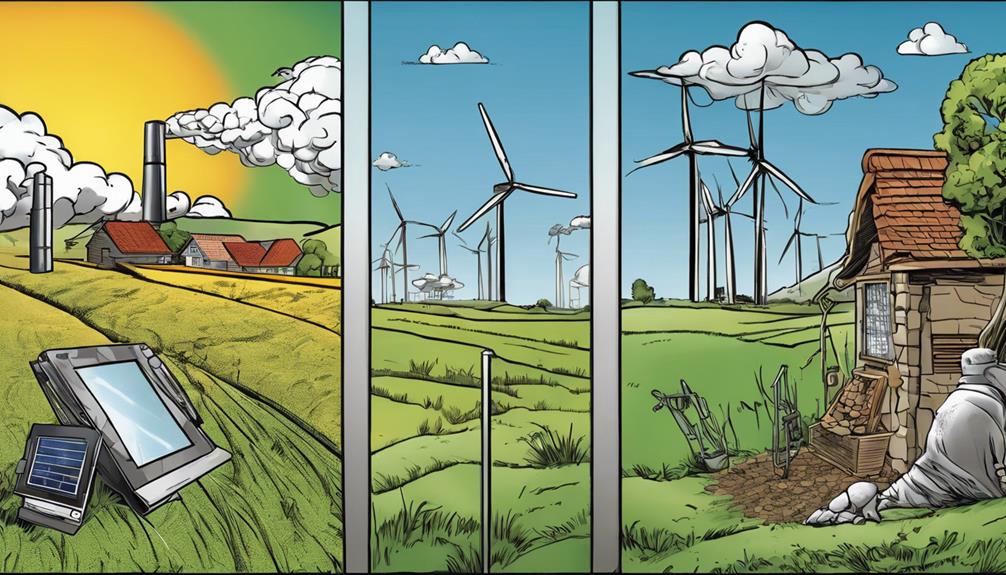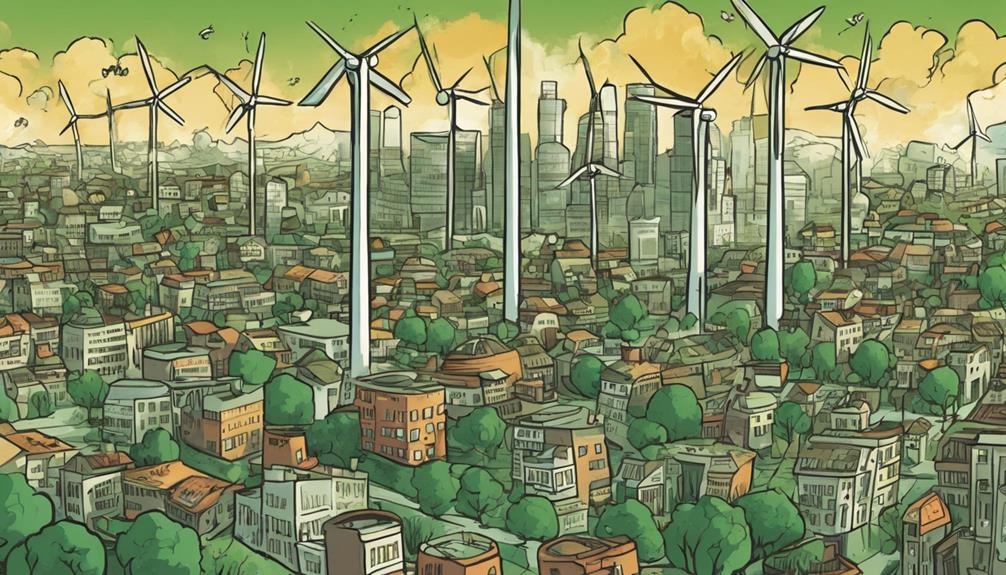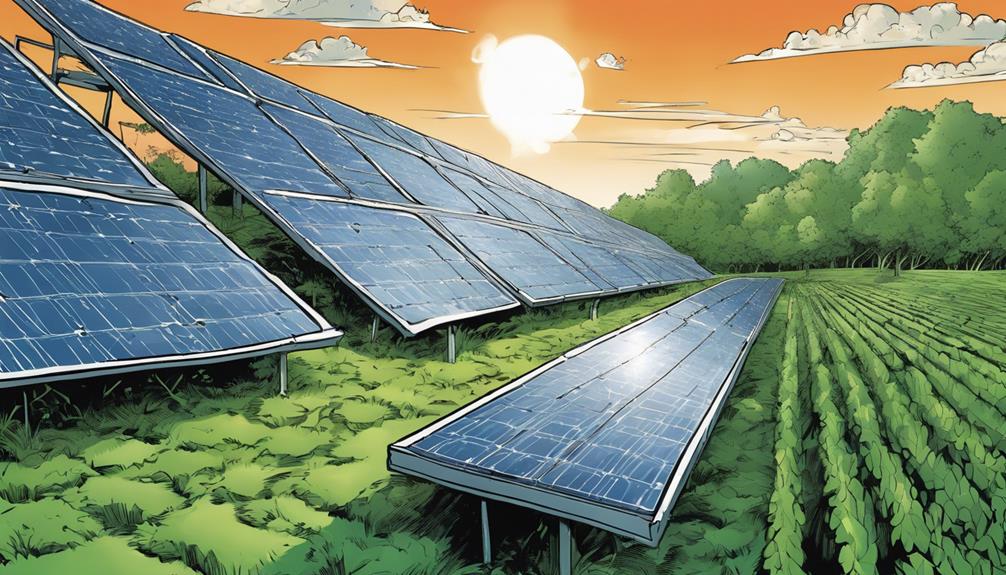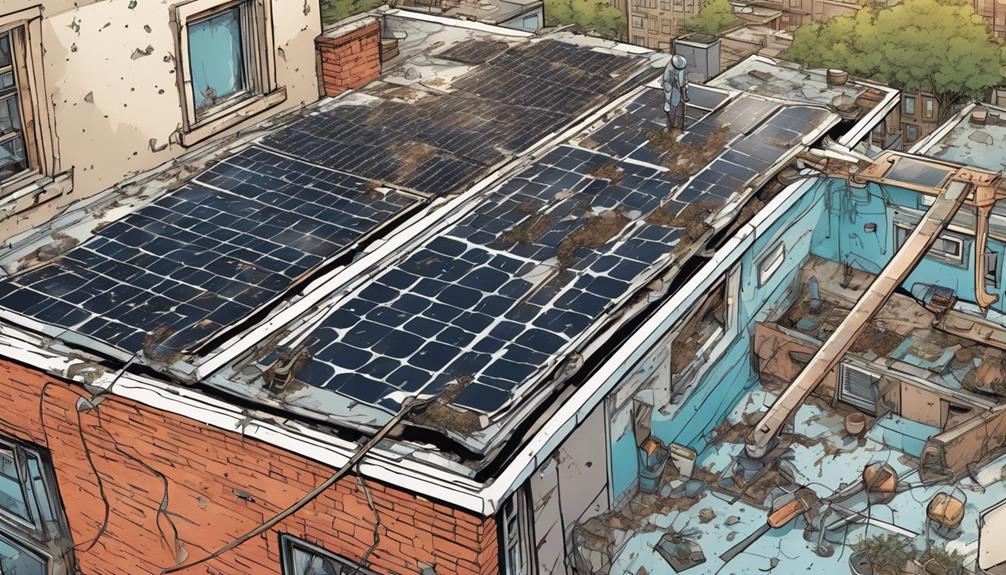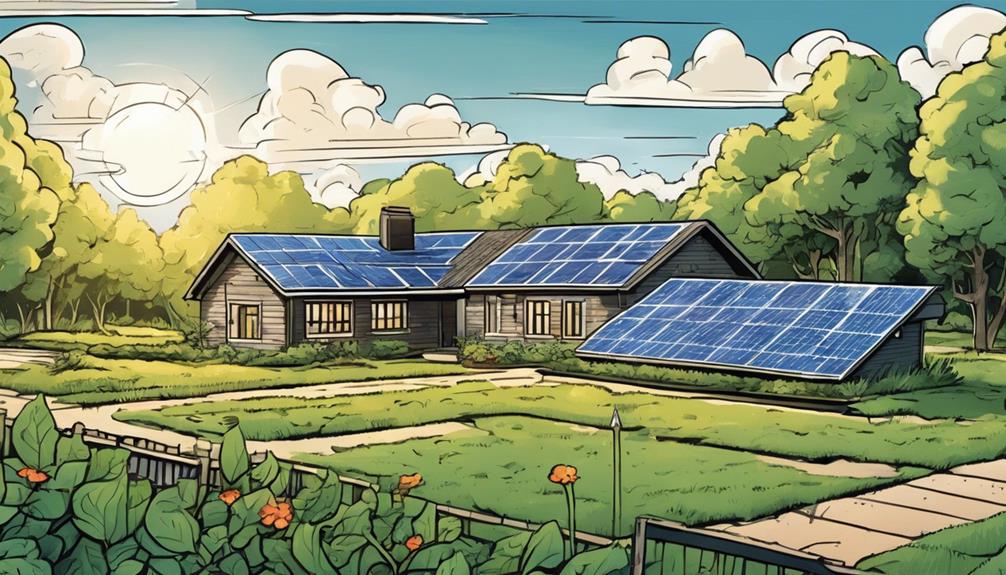To increase EROI for wind and solar energy, focus on tech advancements like bifacial solar panels and concentrated solar power. Enhance energy storage with advanced batteries and smart grids. Optimize infrastructure for better integration and utilize predictive analytics. Improve wind turbine efficiency through larger sizes and better blade designs. It's all about boosting efficiency and sustainability.
Key Takeaways
- Enhance solar efficiency through advanced glass materials and bifacial panels.
- Develop high-efficiency thin-film solar technology.
- Integrate concentrated solar power with thermal storage for better EROI.
- Optimize smart grids for renewable energy distribution.
- Increase wind turbine efficiency with larger size, advanced blades, and smart technology.
Technology Advancements for Solar Efficiency
You can enhance solar energy efficiency through various technological advancements. Improving solar panel efficiency by researching advanced glass materials can markedly boost energy output.
Implementing bifacial solar panels that capture sunlight from both sides enhances energy generation by maximizing energy capture throughout the day.
Developing thin-film solar technology with higher efficiency increases energy yield per unit area, making it a promising option for boosting overall energy generation.
Exploring concentrated solar power (CSP) systems with thermal energy storage extends the capability of solar power generation beyond daylight hours, ensuring a more consistent energy supply.
Advancing solar tracking systems that follow the sun's path optimizes energy capture, leading to increased overall efficiency and energy generation.
These technological innovations collectively contribute to improving the efficiency and effectiveness of solar energy systems, ultimately increasing the renewable energy yield and making solar power a more reliable and sustainable energy source.
Research and Development in Energy Storage

Advancements in energy storage technologies play a pivotal role in increasing the EROI for renewable sources like wind and solar power. Research and development in battery technologies, such as lithium-ion and flow batteries, enhance the efficiency of storing excess energy generated from renewable sources.
Implementing smart grid technologies and demand response strategies optimizes energy storage, reducing energy waste and improving EROI for wind and solar power. Innovative solutions like pumped hydro storage and compressed air energy storage help balance the fluctuations in renewable energy production, further boosting EROI.
Collaboration among researchers, industry stakeholders, and policymakers is essential to drive energy storage innovation, ensuring the maximum utilization of wind and solar power. By investing in research and development in energy storage, the renewable energy sector can continue to innovate, improve efficiency, and increase the overall EROI of wind and solar power systems.
Smart Grid Integration for Efficiency
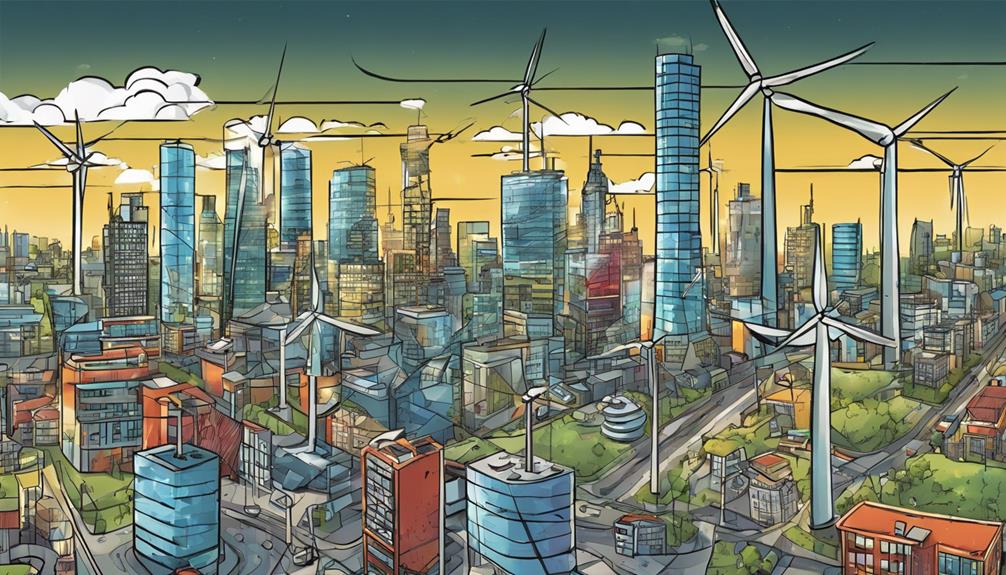
Smart grid integration greatly enhances the efficiency of renewable energy sources like wind and solar power. By optimizing energy production and distribution, smart grids play an essential role in increasing the EROI of these sustainable resources.
Here are key ways in which smart grid integration boosts EROI:
- Distribution Optimization: Smart grids enable efficient distribution of renewable energy, minimizing losses and maximizing utilization.
- Demand Response Programs: These programs help align energy consumption with renewable energy availability, enhancing overall EROI.
- Energy Storage Solutions: Integration of storage technologies mitigates intermittency issues in wind and solar power, contributing to a higher EROI.
- Predictive Analytics and AI Algorithms: By utilizing advanced analytics and algorithms, smart grids optimize renewable energy generation, further raising EROI.
Through these mechanisms, smart grid integration not only addresses challenges related to renewable energy but also notably enhances the overall efficiency and sustainability of the energy system.
Optimal Energy Infrastructure Integration

Integrating renewable energy sources with optimized energy infrastructure is essential for maximizing efficiency and increasing EROI. By incorporating energy storage systems, such as batteries, along with smart grid technologies and demand-side management strategies, the flexibility and efficiency of renewable energy systems can be greatly enhanced. This integration allows for better utilization of renewable sources like wind and solar power, ultimately boosting EROI.
Furthermore, the development of hybrid renewable energy systems, which combine various sources like wind, solar, and hydropower, can create a more reliable and balanced energy supply. Implementing advanced forecasting techniques for wind and solar generation adds another layer of optimization, ensuring that energy output is optimized.
Enhancing Wind Turbine Efficiency
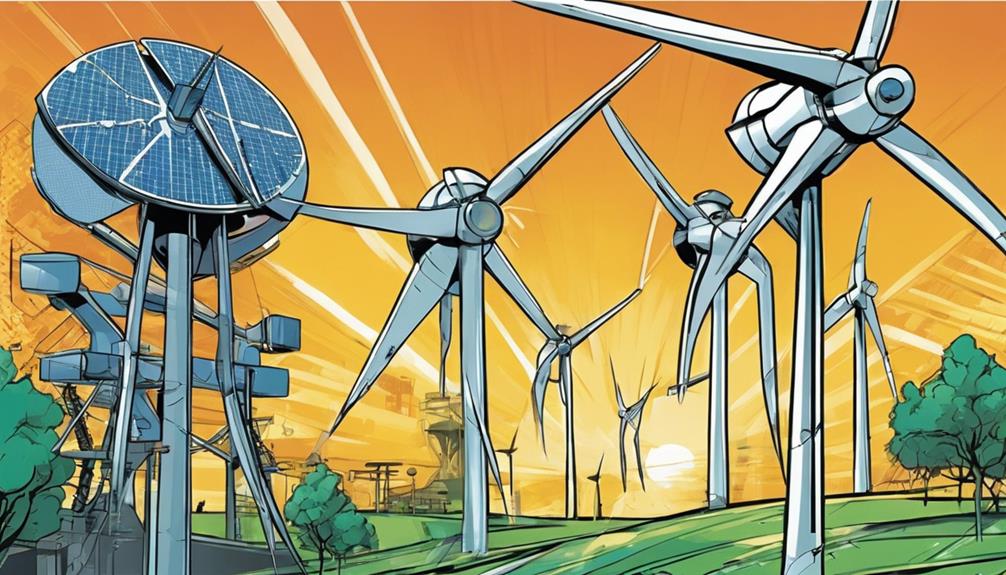
Enhancing wind turbine efficiency can be achieved through various strategies such as increasing turbine size and height to capture stronger wind speeds. By implementing advanced blade designs and materials, aerodynamic efficiency is enhanced, leading to increased energy output from wind turbines.
Integrating smart technology enables real-time monitoring and adjustments, optimizing performance and ultimately boosting EROI. Additionally, upgrading electrical systems and components within wind turbines can minimize energy losses, improving overall efficiency.
- Increasing turbine size and height
- Implementing advanced blade designs
- Integrating smart technology for monitoring
- Upgrading electrical systems to minimize energy losses
These strategies collectively work towards enhancing the efficiency of wind turbines, ultimately contributing to an improved EROI for wind power generation.
To further enhance the EROI, developing innovative energy storage solutions such as batteries or hydrogen production can help address intermittency challenges associated with wind energy.
Frequently Asked Questions
What Is the EROI for Wind Energy?
The EROI for wind energy typically ranges from 18:1 to 40:1, showcasing its efficiency in energy production. Advances in technology, efficient siting, energy storage solutions, smart grid tech, and optimized maintenance processes contribute to boosting wind energy's EROI.
How Would an Increase in the Use of Renewable Energy Resources Such as Solar or Wind Power Affect the Carbon Cycle?
Increasing the use of renewable energy sources like solar and wind power can positively impact the carbon cycle by reducing greenhouse gas emissions. This shift towards cleaner energy helps mitigate climate change effects and promotes environmental sustainability.
How Can We Increase Renewable Energy Usage?
To increase renewable energy usage, you must invest in energy storage tech, enhance turbine and panel efficiency, develop smart grid solutions, promote distributed resources, and implement supportive policies. These actions can boost EROI for wind and solar power.
How to Improve the Efficiency of Renewable Energy Sources?
To boost renewable energy efficiency, implement advanced technologies, enhance energy storage solutions, integrate smart grids, invest in hybrid systems, and promote energy-saving policies. These steps optimize energy utilization, reduce waste, and increase overall EROI.
What Impact Can Increasing EROI Have on Making Solar Energy More Accessible in Third World Countries?
Increasing EROI, or energy return on investment, can significantly impact the accessibility of using solar energy for third world countries. With a higher EROI, the cost of producing and implementing solar energy systems decreases, making it more feasible for developing nations to adopt this sustainable energy source.
Conclusion
To increase the EROI for renewable energy sources like wind and solar power, it's important to focus on technological advancements, energy storage research, smart grid integration, ideal infrastructure, and enhancing wind turbine efficiency.
By implementing these strategies, we can make significant strides towards a more sustainable and efficient energy future.
Stay tuned for more exciting developments in the world of renewable energy!
